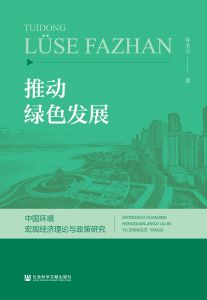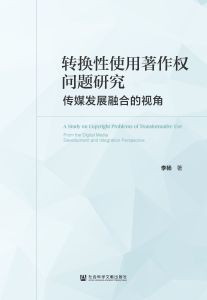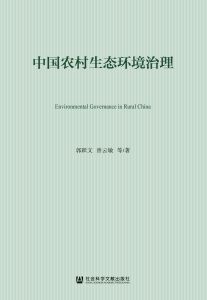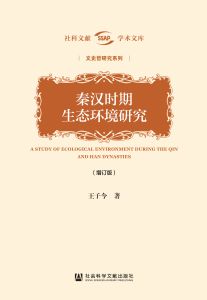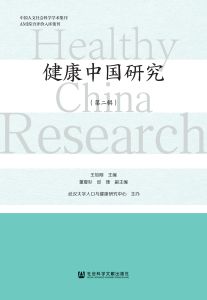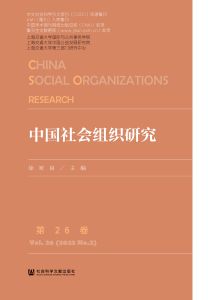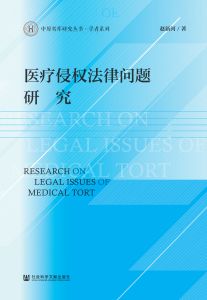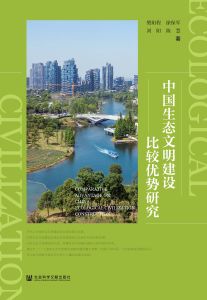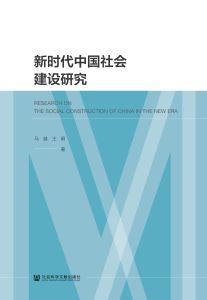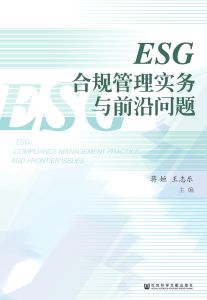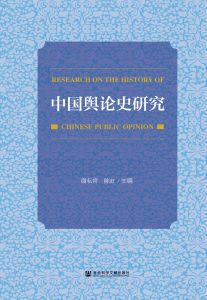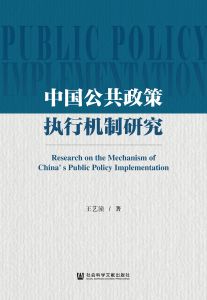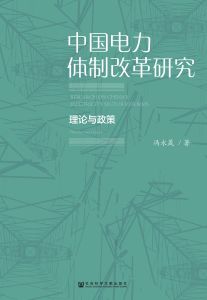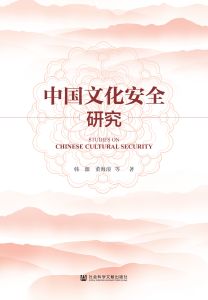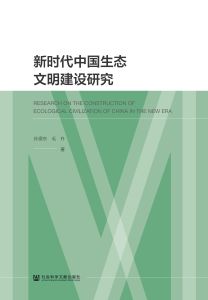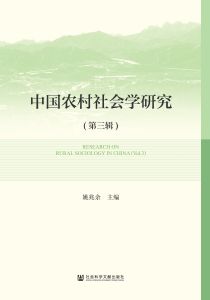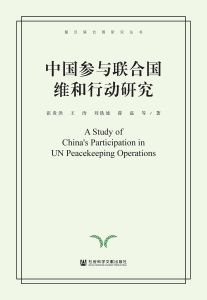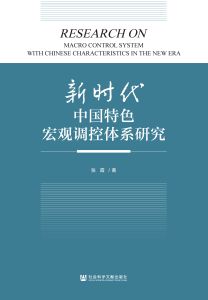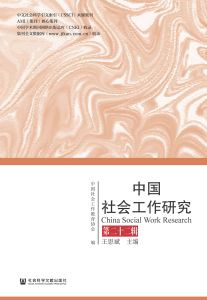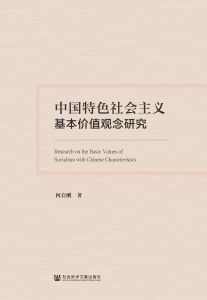首页 >
图书详情
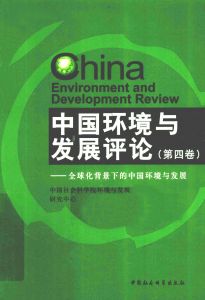
图书简介
目录
参考文献
音频
视频
-
总论
-
全球化挑战可持续发展
-
-
第一部分 全球化
-
关于如何看待全球化的思考
-
-
第二部分 气候变化
-
公共问题需要人类的新智慧
-
低碳经济对中国可持续发展的机遇与挑战
-
低碳经济:应对气候变化与大气污染
-
国际气候谈判新进展与中国发展低碳经济面临的挑战
-
基于贸易的低碳技术国际转移的效果评价与影响因素分析
-
中国温室气体排放及情景研究评价
-
应对气候变化:来自干旱草原牧区的启示
-
应对气候变化问题挑战:捍卫并珍惜中国的发展权利
-
-
第三部分 全球化与中国环境和发展
-
中国节能减排的若干思考
-
二十国集团(G20)国家的经济环境效率比较:基于DEA模型的分析
-
-
第四部分 贸易与可持续性
-
国际贸易对中国能源需求和环境质量的影响
-
贸易自由化对中国可持续发展的影响
-
全球化:中国林产品的国际贸易与生态环境保护
-
中国对外贸易的虚拟水资源含量及其政策含义
-
[1][1][德]乌尔里希·贝克:《什么是全球化?全球主义的曲解——应对全球化》,常和芳译,吴志成校,华东师范大学出版社2008年版。
[2][2][美]托马斯·W.博格:《重新设计全球经济安全与正义》,见[英]戴维·赫尔德、安东尼·麦克格鲁编:《全球化理论:研究路径与理论争论》,王生才译,社会科学文献出版社2009年版,第242—264页。
[3][3]国家统计局农村社会经济调查司:《中国农村住户调查年鉴(2006)》,中国统计出版社2006年版。
[4][4][美]莱纳·莫斯利:《全球化的政治经济学》,见[英]戴维·赫尔德、安东尼·麦克格鲁编:《全球化理论:研究路径与理论争论》,王生才择,社会科学文献出版社2009年版,第116—140页。
[5][5]潘家华、陈迎、庄贵阳、杨宏伟:《2008—2009年全球应对气候变化形势分析与展望》,中国社会科学院科研局主办:《学术动态(研究报告版)》2010年第2期(总第1165期)。
[6][6]吴洪英:《第三世界发展的时代特征》,见谈世中、王耀媛、江时学编:《经济全球化与发展中国家》,社会科学文献出版社2002年版,第50—58页。
[7][7][澳]大卫·希尔曼、约瑟夫·韦恩·史密斯:《气候变化的挑战与民主的失灵》,武锡申、李楠译,社会科学文献出版社2009年版。
[8][8]张宇燕:《全球化与中国发展》,社会科学文献出版社2007年版。
[9][9]赵京兴:《中国经济发展的过去、现在和未来》,见汪同三、李雪松编:《宏观经济效应及前景分析》,经济管理出版社2009年版,第1—26页。
[10][10]中国21世纪议程管理中心可持续发展战略研究组:《全球化与中国“三农”》,社会科学文献出版社2005年版。
[11][11]Andersson,Jan O.and Mattias Lindroth.2001. Ecologically unsustainable trade. Ecological Economics 37(2001),113—122.
[12][12]Chen,Shaohua and Martin Ravallion.2008. The Developing World is Poorer than We Thought,but noL ess Successful in the Fight Against Poverty.The World Bank Policy Research Working Pap ar,Report No.WPS4703.http://go.worklbank.org;/NJNRF6AJX0.
[13][13]Chinese Academy of Sciences,Chinese Academy of Social Sciences,Development Research Centre of the State Council,National Climate Centre,Tsinghua University.2009.Carbon Equity :PerspectivefromChineseAcademicCommunity.Dec.10,2009.
[14][14]Global Footprint Network.2009.Living Planet Report 2008.www.footprintnetwork.org/.
[15][15]Hoekstra,A.Y. and A.K.Chapagain.2007. Water Footprints of Nations:Water use by People as a Function of Their Consumption Pattern.Water Resource Management 21(1),35—48.
[16][16]Hoekstra,A.Y.and P.Q.Hung.2002.Virtual Water Trade:a Quantification of Virtual Water Flow between Nations in Relation to International Crop Trade.Research Report Series 11,UNESC0-1HE,Delft.
[17][17]Lundberg,M.and L.Squire.2003.The Simultaneous Evolution of Growth and Inequality. Economic Journal ,113,326—344.
[18][18]Milanovic,M.2005. Can We Discern the Effect of Globalization on Income distribution?World Bank Economic Review .19(1),21—44.
[19][19]Pavallion,Martin.2001.Growth,inequality and poverty;Looking beyond averages.World Development Vol.29,No.11 1803—1815.
[20][20]Pavallion,Martin.2006.Looking beyond averages in the trade and poverty debate. World Development Vol.34,No.8,1374—1392.
[21][21]Rees,W.E.1992. Ecological footprint and appropriated carry capacity:whal urban economics leaves out. Environment and Urbanization 4(2),121—130
[22][22]Rees,W.E. 1996.Revisiting carry capacity:area-based indicators of sustainability. Population and Environment 17(3),195—215.
[23][23]Rees,W.E.,M. Wackernagel 1994.Ecological footprint and appropriated carry capacity:measuring the natural capital requirements of the human economy.In Jansson,A.M.,M.Hammer,C.Folke,and R.Costanza(eds.)Investing in Natural Capital:The Ecological Economics Approach to Sustainability . ISEE/Island Press,Washington,D.C.,362—390.
[24][24]The World Bank.2003.World Development Report 2003. New York:Oxford University Press.
[25][25]The World Bank.2009.2009 World Development Indicators . http://web.worldbank.org/.
[26][26]UNDP.2005.Human Development Report 2005.hltp;//hdr.undp.org/.
[27][27]UNDP.2006.Human Development Report 2006.http://hdr.undp.org/.
[28][28]UNDP.2008.Human Development Report 2007/2008.http://hdr.undp.org/.
[29][29]White,Thomas J.2007.Sharing resources:The global distribution of the Ecological Footprint.Ecological Economics ,64(2007),402—410.
[30][30]WTO,2008.World Trade Development in 2007.www.wto.org/.
[31][1][澳]琳达·维斯、约翰·M.霍布森:《国家与经济发展——一个比较及历史性的分析》,吉林出版集团有限责任公司2009年版。
[32][2][意]乔万尼·阿里吉:《亚当·斯密在北京——21世纪的谱系》,社会科学文献出版社2009年版。
[33][3][澳]罗·霍尔顿:《全球化与民族国家》,世界知识出版社2006年版。
[34][4]马克思:《资本论》1—3卷,人民出版社2004年版。
[35][5][美]沃勒斯坦:《现代世界体系》1—3卷,高等教育出版社2004年版。
[36][6][美]威廉·格雷德:《资本主义全球化的疯狂逻辑》,社会科学文献出版社2003年版。
[37][7][美]芭芭拉·思多林斯主编:《论全球化的区域效应》,重庆出版社2002年版。
[38][8][法]弗朗索瓦·沙奈:《资本全球化》,中央编译局2001年版。
[39][9][法]弗朗索瓦·沙奈等著:《金融全球化》,中央编译局2001年版。
[40][10]赵京兴:《中国经济的现在、过去和未来——中国的分层工业化道路》,载汪同三主编《全球化与中国:宏观经济效应及前景分析》,经济管理出版社2009年版。
[41][11]王子先主编:《中国改革开放与对外经贸30年》,经济管理出版社2008年版。
[42][12]王逸舟主编:《中国对外关系转型30年》,社会科学文献出版社2008年版。
[43][13]梅俊杰:《自由贸易的神话——英美富强之道考辨》,上海三联书店2008年版。
[44][14]金芳:《全球化经营与当代国际分工》,上海人民出版社2006年版。
[45][15]邱尊社主编:《马克思主义与当代经济全球化问题研究》,北京大学出版社2006年版。
[46][16]张振江:《从英镑到美元:国际经济霸权的转移(1933—1945)》,人民出版社2006年版。
[47][17][美]罗伯特·吉尔平:《全球政治经济学——解读国际经济秩序》,上海人民出版社2006年版。
[48][1][英]安东尼·吉登斯:《气候变化的政治》,曹荣湘译,社会科学文献出版社2009年版。
[49][2][美]R.A.穆勒理:《未来总统的物理课》,李泳译,湖南科学技术’出版社2009年版。
[50][3][美]欧文·拉兹洛:《巨变》,杜默译,中信出版社2002年版。
[51][4]潘家华、陈迎:《碳预算方案:一个公平、可持续的国际气候制度框架》,见王伟光、郑国光主编《应对气候变化报告》,社会科学文献出版社2009年版。
[52][5]沈可挺:《碳关税争端及其对中国制造业的影响》,《中国工业经济》2010年第1期。
[53][6]王军:《气候变化经济学的文献综述》,《世界经济》2008年第8期。
[54][7]文佳筠《单边碳关税与知识产权:全球气候合作的两大障碍》,《绿叶》2009年第10期。
[55][8]张海滨:《环境与国际关系:全球环境的理性思考》,上海人民出版社2008年版。
[56][9]张友国:《中国对外贸易中的环境成本——评估与对策研究》,中国社会科学院数量经济与技术经济研究所研究报告,2009。
[57][10][日]佐佐木毅、[韩]金泰昌:《地球环境与公共性》,韩立新、李欣荣译,人民出版社2009年版。
[58][11]Ackerman,Frank. Can We Afford the Futureö——The Economics of a Warming World ,Zed Books,2009.
[59][12]Heal,Geoffrey and Bengt Kristr M.Uncertainty and Climate Change,Environmental and Resource Economics ,Vol.22(1—2),2002.
[60][13]Heal,Geoffrey. Climate Economics:A Meta-Review and Some Suggestions,NBER Working Paper 13927,April,2008.
[61][14]IPCC-working Group 1. Climate Change 2007:the Physical Science Basis .
[62][15]IPCC-Working Group 3. Climate Change 2007:Mitigation of Climate Change .
[63][16]Levitt,Steven D. and Stephen J. Dubner. What do Al Gore and Mount Pinatubo Have in Common?In SuperFreakonomics,Chapter 5,2009.
[64][17]Nordhaus,William. A Stern Review on the Economics of Climate Change,Journal of Economic Literature ,Vol.XLV,September 2007.
[65][18]Pindyck,H.O. Uncertainty in Environmental Economics,Review of Environmental Economics and. Policy ,2007 1(1).
[66][19]Victor,David.Climate Change:Debating America's Policy Options ,Councilon Foreign Relations Press,2004.
[67][20]Weitzman,Martin L.A Review of the Stern Review on the Economics of Climate Change,Journal of Economic Literature ,Vol.XLV,September2007.
[68][21]Weitzman,Martin L.On Modeling and Interpreting the Economics of Catastrophic Climate Change,the Review of Economics and Statistics ,Vol.91(1),June,2009.
[69][1]陈晓枫:《技术溢出效应的产生及影响因素》,《福州大学学报(社会科学版)》1999年第13卷第2期。
[70][2]崔平、林汝谋、金红光、徐玉杰:《世界燃气轮机市场厂商与产品性能》,《燃气轮机技术》2004年第2期。
[71][3]王伟光、董如合:《市场结构与技术创新:一种产业组织理论的观点》,《沈阳师范学院学报(社会科学版)》2001年第6期。
[72][4]吴贤富:《东汽厂燃气轮机技改投资项目研究》,电子科技大学硕士学位论文2003年版。
[73][5]张建华:《技术进步与中国经济可持续增长的理论分析和经验研究》,《南京大学商学评论》2005年第6期。
[74][6]中国科学院可持续发展战略研究组:《2009中国可持续发展战略报告》,科学出版社2009版。
[75][7]邹骥:《气候变化领域技术开发与转让国际机制创新》,《环境保护》2008年第5a期。
[76][8]邹骥、王海芹:《浅谈多边环境公约背景下国际技术转移的特殊性》,《环境保护》2007年第4b期。
[77][9]Aghion,P.,C.Harris,P.Howitt and J. Vickers,Competition,Imitation and Growth with Step-by-Step Innovation,Review of Economic Studies ,2001(3).
[78][10]Hubler,M.,and A.Keller,Energy Savings via FDI?Empirical Evidence from Developing Countries,2008,Working Paper.
[79][11]International Energy Agency(IEA),Key World Energy Statistics ,2008,Paris.
[80][12]Lile,R.and M.Toman,Promotíng International Transfer of “Clean” Technology,Prepared for Mutually Beneficial Opportunities for Technology Transfer to Promote International Greenhouse Gas Reduction Workshop,Beijing,November 14—17,1997.
[81][13]Metz,B.,O.R.Davidson,J.W.Martens,S.V.Rooijen and L.V.W.McGrory,Mehtodological and Technological Issues in Technology Transfer,A Special Report of IPCC Working Group Ⅲ,Cambridge University Press,2000.
[82][1]高树婷、张慧琴、杨礼荣、王秋玲:《我国温室气体排放量估测初探》,《环境科学研究》1994年第6期。
[83][2]姜克隽:《IPCC第三工作组第二次新排放情景研讨会简介》,《气候变化研究进展》2005年第2期。
[84][3]姜克隽、胡秀莲、庄幸等:《中国2050年低碳情景和低碳发展之路》,《中外能源》2009年第6期。
[85][4]姜克隽、胡秀莲、庄幸等:《中国2050年的能源需求与C02排放情景》,《气候变化研究进展》2008年第4卷第5期。
[86][5]蒋金荷、姚愉芳:《人文发展潜力与碳排放需求空间的定量分析》,《数量经济技术经济研究》2003年第11期。
[87][6]门可佩、曾卫:《中国未来50年人口发展预测研究》,《数量经济技术经济研究》2004年第3期。
[88][7]钱杰、俞立中:《上海市化石燃料排放二氧化碳贡献量的研究》,《上海环境科学》2003年第22卷第11期。
[89][8]韦保仁:《中国能源需求与二氧化碳排放的情景分析》,中国环境科学出版社2008年版。
[90][9]魏一鸣等:《中国能源报告(2008):碳排放研究》,科学出版社2008年版。
[91][10]吴萱:《水泥生产中CO2 产生量计算及利用途径分析》,《环境保护科学》2006年第6期。
[92][11]张国宝编:《中国能源发展报告(2009)》,经济科学出版社2009年版。
[93][12]张仁健、王明星、郑循华等:《中国二氧化碳排放源现状分析》,《气候与环境研究》2001年第3期。
[94][13]郑易生、钱薏红:《深度忧患——当代中国的可持续发展问题》,今日中国出版社1998年版。
[95][14]朱松丽:《水泥行业的温室气体排放及减排措施浅析》,《中国能源》2000年第7期。
[96][15]Auffhammer,Maximilian and Richard T.Carson. Forecasting the Path of China's CO2 Emissions Using Province-level Information,Journal of Environmental Economics and Management ,Vol.55,229—247,2008.
[97][16]Dabo Guan,Klaus Hubacek,Christopher L. Weber,et al. The Drivers of Chinese CO2 Emissions from 1980 to 2030,Global Environmental Change ,2008,626—634.
[98][17]F.R.Veeneklaas and L.M.van den Berg.Scenario Building:Art,Craft or Just A Fashionable Whim,in J,F.Th. Schoute et al.(eds.),Scenario Studies for the Rural Environment ,11—13.
[99][18]J.Schoonenboom,Overview and State of the Art of Scenario Studies for the Rural Environment,in J.F. Th. Schoute et al.(eds.),Scenario Studies for the Rural Environment ,15—24.
[100][19]Jayant Sathaye and Stephen Meyers. Greenhouse Gas Mitigation Assessment:A Guidebook .Kluwer Academic Publishers,1995.
[101][20]Morita,Tsuneyuki And John Robinson. Greenhouse Gas Emission Mitigation Scenarios and Implications,in IPCC,the Third Assessment Report on Climate Change ,2001.
[102][21]Vuuren,van Detlef,Zhou Fengqi,Bert de Vries,et al.Energy and Emission Scenarios for China in the 21st Century-Exploration of Baseline Development and Mitigation Options,Energy Policy ,369—387,2003.
[103][22]Wang,Tao and Jim Watson. China's Energy Transition:Pathways for Low Carbon Development,Sussex Energy Group,SPRU,University of Sussex,UK and Tyndall Centre for Climate Change Research ,2008.
[104][23]Ying Fan,Qiao-MeiLiang,Yi-Ming Wei,et al.A model for China's Energy Requirements and CO2 Emissions Analysis,Environmental Modeling & Software 22,378—393,2007.
[105][1]李文军、张倩:《解读草原困境:对于干旱半干旱草原利用和管理若干问题的认识》,经济科学出版社2009年版。
[106][2]苏尼特左旗地方志编纂委员会:《苏尼特左旗志》,内蒙古文化出版社2004年版。
[107][3]Alessa,L.,A. Kliskey,P. Williams and M. Barton. Perception of Change in Freshwater in Remote Resource-dependent Arctic Communities. Global Environmental Change . 2008. 18,153—164.
[108][4]Berkes,F. and D. Jolly. Adapting to Climate Change:Social-ecological Resilience in a Canadian Western Arctic Community. Conservation Ecology . 2001.5(2),18.
[109][5]Berkes,F.,J. Mathias,M. Kislalioglu and H. Fast. The Canadian Arctic and the Oceans Act:The Development of Participatory Environmental Research and Management. Ocean and Coastal Management . 2001. 44,451—469.
[110][6]Byg,A. and J. Salick. Local Perspectives on a Global Phenomenon—Climate Change in Eastern Tibetan Villages. Global Environmental Change . 2009. 19,156—166.
[111][7]Danielsen,F.,N.D. Burgess,A. Balmford. Monitoring Matters:Examining the Potential of Locally-based Approaches. Biodiversity and Conservation . 2005. 14,2507—2542.
[112][8]Ellis,J. E. and D. M. Swift. Stability of African Pastoral Ecosystems-Alternate Paradigms and Implications for Development. Journal of Range Management . 1988. 41(6),450—459.
[113][9]Fernandez-Gimenez,M.E.Reconsidering the Role of Absentee Herd Owners:A View from Mongolia. Human Ecology 1999. 27(1),1—27.
[114][10]Fernandez-Gimenez,M.E. Spatial and Social Boundaries and the Paradox of Pastoral Land Tenure:A Case Study from Postsocialist Mongolia. Human Ecology . 2002. 30(1):49—78.
[115][11]Goodhue,R.E. and N. McCarthy. Fuzzy Access Modeling Grazing Rights in Sub-Saharan Africa. In:N. MaCarthy,B Swallow,M Kiri,and P. Haze.ll,editors. Property Rights ,Risk,and Livestock Development in Africa . Nairobi,Kenya . International Livestock Research Institute,2000,191—210.
[116][12]Heltberg,R.,P.B.Siegel and S.L.Jorgensen. Addressing Human Vulnerability to Climate Change:Toward a “No-regrets” Approach. Global Environmental Change . 2009. 19,89—99.
[117][13]Illius,A.W. and T.G. O'Connor. On the Relevance of Nonequilibrium Concepts to Arid and Semi arid Grazing Systems. Ecological Applications. 1999. 9(3),798—812.
[118][14]IPCC. Climate Change 2007. http ://www.ipcc.ch/.
[119][15]Kloprogge,P. and J. Van der Sluijs. The Inclusion of Stakeholder Knowledge and Perspectives in Integrated Assessment of Climate Change. Climatic Change . 2006. 75,359—389.
[120][16]Laidler,G. J,Inuit and Scientific Perspectives on the Relationship between Sea Ice and Climate Change:the Ideal Complement. Climatic Change. 2006. 78,407—444.
[121][17]McCay,B.J. and S. Jentoft. Market or Community Failure Critical Perspective on Common Property Research. Human Organization . 1998. 57(1),2129.
[122][18]Mwangi,E. and S. Dohrn,Securing Access to Drylands Resources for Multiple Users in Africa:A Review of Recent Research. Land Use Policy . 2008.25,240—248.
[123][19]Nori,M.,M. Taylor and A. Sensi. Browsing on Fences:Pastoral Land Rights,Livelihoods and Adaptation to Climate Change. TIED issue paper no. 148. Nottingham;Russell Press. 2008.
[124][20]Salick,J. and N. Ross. Traditional Peoples and Climate Change. Global Environmental Change . 2009. 19,137—139.
[125][21]Scoones,I. Exploiting Heterogeneity:Habit at Use by Cattle in Dryland Zimbabwe. Journal of Arid Environments . 1995. 29,221—237.
[126][22]Scoones,I. Living with Uncertainty:New Directions in Pastoral Development in Africa . London:Intermediate Technology Publications Ltd. 1994.
[127][23]Scoones,I. Why Are There So Many Animals Cattle Population Dynamics in the Communal Areas of Zimbabwe. In:Behnke,R. H.,Scoones,I.,Kerven,C.(Eds.),Range Ecology at Disequilibrium:New Models of Natural Variability and Pastoral Adaptation in African Savannas . Overseas Development Institute,London(248pp).1993.
[128][24]Sen,A. Poverty and Famines:An Essay on Entitlement and Deprivation. Oxford University Pres ft. 1981.
[129][25]Smit,B. and J. Wan del. Adaptation,Adaptive Capacity,and Vulnerability. Global Environmental Change . 2006. 16,282—292.
[130][26]Toulmin,C. Combating Desertification:Setting the Agenda for a Global Convention. Drylands Issues Paper ,IIED,London. 1995.
[131][27]United Nations Development Programme(UNDP),Human Development Report 2007/2008;Fighting Climate Change:Human Solidarity in a Divided World. New York. 2007.
[132][28]van Aalst,M. K.,T. Cannon and I. Burton. Community Level Adaptation to Climate Change:The Potential Role of Participatory Community Risk Assessment Global Environmental Change . 2008. 18,165 —179.
[133][29]Verdery,K. Fuzzy Property:Rights,Power,and Identity in Transylvania's Decollectivization. in Burawoy,M and Verdery,K.(eds.)Uncertain Transition:Ethnographies of Change in the Postsocial World . Rowman & Littlefield Publishers,Lanham and Oxford. 1999. 53—82.
[134][30]Westoby,M.,Walker,B.H. and Noy-Meir,I. Opportunistic Management for Rangelands not at Equilibrium. Journal of Range Management,1989. 42:266—274.
[135][31]Wilbanks,T. J. and R. K. Kates,Global Change in Local Places:How Scale Matters. Climatic Change . 1999. 43,601—628.
[136][32]Ybarra,M. Violent Visions of an Ownership Society:The Land Administration Project in Peten,Guatemala. Land Use Policy 2008. 26:44—54.
[137][1]Charnes A.,W.W.Cooper,E. Rhodes. 1978. Measuring the Efficiency of Decision Making Units. European Journal of Operational Resear ch,2(6);429—444.
[138][2]Charnes,A.,Cooper,W.W.,1962. Programming with Linear Fractional Functions. Naval Research Logistics Quarterly ,15:333—334.
[139][3]Fare,Rolf,Grosskopf,Shawna and Pasurka,Garl A. 2003. Environmental Production Functions and Environmental Directional Distance Functions:A Joint Production Comparison(February 19,2003). Available at SSRN ,http://ssrn.com/abstract=506222.
[140][4]Fare,Rolf,Shawna Grosskopf,C. A.K. Lovell,and Carl Pasurka. 1989. Multilateral Productivity Comparisons When Some Outputs are Undesirable:A Nonparametric Approach. Review of Economics and Statistics ,71(1):90—98.
[141][5]Fussier,Claude. 1996. Driving Eco Innovation . Pitman Publishing.
[142][6]HaiJu,Atakelty,and Terrence S. Veeman. 2001. Non-Parametric Productivity Analysis with Undesirable Outputs:An Applictíon to the Canadian Pulp and Paper Industry. American Journal of Agricultural Economics ,83(3):805—816.
[143][7]Hedstrom G,Poltorzycki S,Stroh P,1998. Sustainable Development:The Next Generation. Prism-Sustainable Development:How Real,How Soon,and Who's Doing What ?No. 4(1998),Cambridge MA :Arthur D. Little:5—19.
[144][8]Holliday C. 2001. Sustainable Growth,the DuPont Way,Harvard Business Review ,September 2001:129—134.
[145][9]IFOK. 1997. Bausteine für ein zukunftsfahiges Deutschland,Diskursprojekt im Auftrag von VCI und IG Chemie-Papier-Keramik,Wiesbaden:Gabler.
[146][10]Jefferson,Gary H.,Albert G. Z. Hu,Xiaojing Guan and Xiaoyun Yu. 2003. Ownership,Performance,and Innovation in China's Large and Medium Size Industrial Enterprise Sector. China Economic Review ,14:89—113.
[147][11]Jefferson,Gary H.,Thomas G. Rawski and Yuxin Zheng. 1996. Chinese Industrial Productivity:Trends,Measurement Issues and Recent Developments. Journal of Comparative Economics ,23:146—180.
[148][12]King,Robert G,and Levine,Ross. 1994. Capital Fundamentalism,Economic Development,and Economic Growth,Carnegie-Rochester Conference Series on Public Policy,40:259—92,
[149][13]Magnus Lindmark and Peter Vikström. 2003. Global convergence in Productivity-A Distance Function Approach to Technical Change and Efficiency Improvements. Paper for the conference “ Catching-up growth and technology transfers in Asia and Western Europe” ,Groningen 17—18 October,2003.
[150][14]OECD. 1998. Eco-Efficieincy,Pré-publication copy.
[151][15]Pittman,Russell W. 1983. Multilateral Productivity Comparisons with Undesirable Outputs. Economic Journal ,93:883—891.
[152][16]Schaltegger,Sturm. 1990. Okologische Rationalitat:Anaatzpunkte Zur Ausgestaltung Yon Okologieorienttierten Management Instrumenten. Die Unternehmung ,4:273—290.
[153][17]Scheel,H.,2001. Undesirable Outputs in Efficiency Valuations. European Journal of Operational Research ,132:400—410.
[154][18]Seiford,L. M.,Zhu,J.,2002. Modeling Undesirable Factors in Efficiency Evaluation. European Journal of Operational Research ,142:16—20.
[155][19]Sun,Haishun,Phillip Hone and Hristos Do ucouliagos. 1999. Economic Openness and Technical Efficiency. Economics of Transition ,7(3):615—636.
[156][20]Tone,K. 2003. Dealing with Undesirable Outputs in DEA:A Slacks-based Measure(SBM)Approach. GRIPS Research Report Series 1-2003—0005.
[157][21]Wu Yanrui. 2000. Is China's Economic Growth Sustanable?A Productivity Analysis. China Economic Review ,11:278—296.
[158][22]Zheng Jinghai,Siaoxuan Liu and Arne Bigsten. 1998. Ownership Structure and Determinants of Technical Efficiency;An Application of Data Envelopment Analysis to Chinese Enterprises(1986—1990). Journal of Comparative Economics ,26:465—484.
[159][23]Zheng Jinghai,Xiaoxuan Liu and Arne Bigsten. 2003. Efficiency,Technical Progress,and the Best Practice in Chinese State Enterprises(1980—1994). Journal of Comparative Economics ,31:134—152.
[160][24]Zhu,J.,2003. Quantitative Models for Performance Evaluation and Benchmarking:Data Envelopment Analysis with Spreadsheets and DEA Excel Solver. Kluwer Academic Publishers.
[161][25]Zofto,J. L. ,A.M. Prieto. 2001. Environmental Efficiency and Regulatory standards;the Case of CO2 Emissions form OECD Industries. Resource and Energy Economics 23:63—83.
[162][26]步丹璐:《生态效率与环境成本管理》,《财会月刊》(综合)2007年第10期。
[163][27]高前善:《生态效率——企业环境绩效审计评价的一个重要指标》,《经济论坛》2006年第7期。
[164][28]郝维昌:《金属材料的环境负荷评价及其LCA数据库的开发》,兰州大学,2000年。
[165][29]胡鞍钢等:《考虑环境因素的省级技术效率排名(1999—2005)》,《经济学(季刊)》2008年第7期。
[166][30]柯健、李超:《基于DEA聚类分析的中国各地区资源、环境与经济协调发展研究》,《中国软科学》2005年第2期。
[167][31]寇昕莉:《高分子材料的环境负荷评价》,兰州大学,1999年。
[168][32]李兵等:《企业生态足迹与生态效率研究》,《环境工程》2007年第25期。
[169][33]李贵奇、聂祚仁、周和敏等:《钢铁生产的环境协调性评价》,《中南工业大学学报》2002年第33期。
[170][34]廖红、朱坦:《生态经济效率环境管理发展的关系探讨》,《上海环境科学》2002年第21期。
[171][35]刘江龙、丁培道、钱小蓉:《金属材料的环境影响因子及其评价》,《环境科学进展》1996年第4期。
[172][36]刘江龙、丁培道、张静:《金属材料表面强化过程对环境影响的定量评价》,《中国表面工程》2000年第1期。
[173][37]陆钟武、蔡九菊:《钢铁生产流程的物流对能耗的影响》,《金属学报》2000年第36期。
[174][38]马育军、黄贤金、肖思思、王舒:《基于DEA模型的区域生态环境建设绩效评价——以江苏省苏州市为例》,《长江流域资源与环境》2007年第6期。
[175][39]苏向东、王天民、何力等:《有色金属材料的环境负荷定量评价模型》,《环境科学学报》2002年第22期。
[176][40]孙广生等:《DEA在评价工业生产环境效率上的应用》,《安徽师范大学学报(自然科学版)》2003年第2期。
[177][41]涂正革:《环境、资源与工业增长的协调性——基于方向性环境距离函数对规模以上工业的分析》,《经济研究》2008年第2期。
[178][42]王兵、吴延瑞:《环境管制与全要素生产率增长:APEC的实证研究》,《经济研究》2008年第5期。
[179][43]王金南:《发展循环经济是21世纪环境保护的战略选择》,《环境科学研究》2002年第15期。
[180][44]王寿兵、王如松、吴千红:《生命周期评价中资源的耗竭潜力及当量系数的一种算法》,《复旦学报》(自然科学版)2001年第40期。
[181][45]席德立、彭小燕:《LCA中清单分析数据的获得》,《环境科学》1997年第18期。
[182][46]夏凯旋等:《基于经济生态效率理论的汽车共享服务研究》,《管理世界》2007年第11期。
[183][47]岳媛媛、苏敬勤:《生态效率:国外的实践与我国的对策》,《科学学研究》2004年第22期。
[184][48]张炳等:《基于DEA的企业生态效率评价:以杭州湾精细化工园区企业为例》,《系统工程理论与实践》2008年第4期。
[185][49]张群、荀志远:《基于数据包络分析方法的项目环境效率评价》《科技进步与对策》2007年第24期。
[186][50]周国梅、彭昊、曹凤中:《循环经济和工业生态效率指标体系》,《城市环境与城市生态》2003年第16期。
[187][51]诸大建、邱寿丰:《生态效率是循环经济的合适测度》,《中国人口·资源与环境》2006年第16期。
[188][1]陈丽萍、杨忠直:《中国进出口贸易中的生态足迹》,《世界经济研究》2005年第5期。
[189][2]陈锡康:《中国1995年对外贸易投入产出表及其应用》,见许宪春、刘起运编:《2001年中国投入产出理论与实践》,中国统计出版社2002年版。
[190][3]陈迎、潘家华、谢来辉:《中国外贸进出口商品中的内涵能源及其政策含义》,《经济研究》2008年第7期。
[191][4]李刚:《中国对外贸易生态环境代价的物质流分析》,《统计研究》2005年第9期。
[192][5]李景华:《SDA模型的加权平均分解法及在中国第三产业经济发展分析中的应用》,《系统工程》2004年第9期。
[193][6]马涛、陈家宽:《中国工业产品国际贸易的污染足迹分析》,《中国环境科学》2005年第4期。
[194][7]彭海珍:《关于贸易自由化对中国环境影响的分析》,《财贸研究》2006年第4期。
[195][8]齐晔、李惠民、徐明:《中国进出口贸易中的隐含能估算》,《中国人口·资源与环境》2008年第3期。
[196][9]沈利生:《我国对外贸易结构变化不利于节能降耗》,《管理世界》2007年第10期。
[197][10]沈利生:《对外贸易对我国污染排放的影响》,《管理世界》2008年第6期。
[198][11]尹敬东:《外贸对经济增长的贡献:中国经济增长奇迹的需求解析》,《数量经济技术经济研究》2007年第10期。
[199][12]张连众、朱坦、李慕涵、张伯伟:《贸易自由化对我国环境影响的实证分析》,《南开经济评论》2003年第3期。
[200][13]郑玉歆、樊明太、张友国:《WTO条件下中国贸易与环境的协调发展——基于CGE模型的总体分析》,研究报告,2005年。
[201][14]Ahmed N.and A.Wyckoff. Carbon Dioxide Emissions Embodied in International Trade ,DSTI/DOC(2003)15,Organisation for Economic Cooperation and Development(OECD),2003.
[202][15]Antweiler,W. The Pollution Terms of Trade,Economic Systems Research ,Vol.8,No.4,1996,361—365.
[203][16]Beghin Jhon,Sébastien Dessus,David Ronald-Holst and Dominique van der Mensbrugghe. General Eguilibrium Modelling of Trade and The Environment,Techinical Papers,No. 116,OECD Development Center,Paris,Sepetember,1996.
[204][17]Copeland,Brian R.,M.S.Taylor. Trade,Growth,and the Environment,Journal of Economic Literature ,Vol.XLII,2004,7—71.
[205][18]Dietzenbacher Eric,Bart Los. Structural Decomposition Techniques:Sense and Sensitivity,Economic System Research ,Vol.10,No.4,1998,307—323.
[206][19]Dietzenbacher,E. & Los,B.Structural Decomposition Analyseswith Dependent Determinants,Economic Systems Research ,Vol.12,No.4,2000,497—514.
[207][20]Fujimagari,D.The Sources of Change in the Canadian Industry Output,Economic Systems Research ,Vol.1,1989,187—202.
[208][21]Grossman Gene,Alan Kruger,Environmental Impacts of a North American Free Trade Agreement,In Garber,Peter M.(ed.),The Mexico —US.Free Trade Agreement .Cambridge and London,MIT Press,1993,13—56.
[209][22]IPCC.Revised 1996 IPCC Guidelines for National Greenhouse Gas Inventories:Workbook (Vol.2),1996,http://www.ipcc-nggip.iges.or.jp/puhlic/gl/invs5a.html.
[210][23]Lee Hiro,David Roland-Holst. International Trade and the Transfer of Environmental Costs and Benefits ,OECD Development Centre,Technical Paper No. 91,1993.
[211][24]Lee Hiro,David Roland-Holst. Trade-Induced Pollution Transfers and Implications for Japan's Investment and Assistant,Asia Economic Journal ,Vol.14,No.2,2000,123—146.
[212][25]Lenzen M.,L.-L.Pade,and J.Munksgaard. CO2 Multipliers in Multi-region Input-output Models,Economic Systems Research 、Vol.16,No.4,2004,391—412.
[213][26]Li You,C.N.Hewitt. The Effect of Trade between China and the UK on National and Global Carbon Dioxide Emissions,Energy Policy,Vol. 36,2008,1907—1914.
[214][27]Machado,Giovani,Roberto Schaeffer,and Ernst Worrel. Energy and Carbon Embodied in the International Trade of Brazil:An Input-output approach,Ecological Economics ,Vol.39,No.3,2001,409—424.
[215][28]Mukhopadhyay Kakali. Impact on the Environment of Thailand's Trade with OECD Countries,Asia-Pacific Trade and Investment Review ,Vol.2,No.1,2006,25—46.
[216][29]Munksgaard Jesper,Klaus Alsted Pedersen,Mette Wier,Impact of Household Consumption on CO2 Emissions,Energy Economics ,Vol.22,2000,423—440.
[217][30]Munksgaard J. and K.A.Pedersen. CO2 Accounts for Open Economies:Producer or Consumer Responsibility?,Energy Policy ,Vol.29,2001,327—334.
[218][31]Pan J. Phillips J.,Chen Y.China's Balance of Emissions Embodied in Trade:Approaches to Measurement and Allocating International Responsibility,Oxford Review of Economic Policy ,Vol.24,No.2,2008,354—376.
[219][32]Peters Glen P.,Hertwich E,G. Energy And Pollution Embodied In Trade:The Case Of Norway, Technical Report,Industrial Ecology Programme,Norwegian University of Science and Technology(NTNU),Trondheim,Norway,2005.
[220][33]Peters Glen P.,Hertwich E.G.Pollution Embodied in Trade:the Norwegian Case,Global Environmental Change ,Vol.16,No.4,2006,379—387.
[221][34]Rhee,H.-C.,Chung,H.-S. Change in CO,Emission and its Transmissions between Korea and Japan Using International Input-output Analysis,Ecological Economics ,Vol.58,2006,788—800.
[222][35]Runge,C.F,Trade Pollution and Environmental Protection,In Bromley,D.W.(ed.),The Handbook of Environmental Economics ,Blackwell,Oxford,1995.
[223][36]30)Seibel,Steffen.Decomposition Analysis of Carbon Dioxide Emission Changes in Germany-Conceptual Framework and Empirical Results,European Commission Working Papers and Studies ,2003.
[224][37]Shui,B.,Harriss,R.C. The Role of CO2 embodiment in US-China Trade,Energy Policy ,Vol.34,2006,4063—4068.
[225][38]Wang T. and Watson J,Who Owns China's Carbon Emissions . Tyndall Briefing Note No.23,October,2007.
[226][39]United Nations. Handbook of Input-Output Table Compilation and Analysis,Studies in Methods Series F,No.74,Handbook of National Accounting ,United Nations,1999.
[227][40]Weber,C.L.,Peters,G.P.,Guan,D.,Hubacek,K.The Contribution of Chinese Exports to Climate Change,Energy Policy,Vol.36,2008,3572—3577.
[228][41]Wyckoff A.W. and J.M. Roop. The Embodiment of Carbon in Imports of Manufactured Products:Implications for International Agreements on Greenhouse Gas Emissions,Energy Policy ,Vol.22,1994,187—194.
[229][1]李善同、翟凡等:《加入WTO对中国环境的影响》,第三届中国环境与发展国际合作委员会第一次会议“世贸组织与环境”课题组2002年报告
[230][2]林汉川、田东山:《国际绿色贸易壁垒及其突破对策探析》,《经济研究参考》2002年版。
[231][3][瑞典]托马斯·安德森等著:《环境与贸易——生态、经济、体制和政策》,清华大学出版社1998年版。
[232][4]夏友富:《外商投资中国污染密集型产业现状、后果及其对策研究》,《管理世界》1999年第3期。
[233][5]郑玉歆、樊明太等著:《中国CGE模型及政策分析》,社会科学文献出版社1999年版。
[234][6]郑玉歆、樊明太、张友国:《WT0条件下中国贸易与环境的协调发展:基于中国CGE模型的总体分析》,国家社科基金项目(00BJY083)研究报告2002年。
[235][7]郑玉歆、马纲:《环保目标对经济发展影响一般均衡分析》,郑玉歆主编:《环境影响的经济分析——理论、方法与实践》,社会科学文献出版社2001年版。
[236][8]国家统计局人口和社会科技统计司:《中国环境统计概要》,中国统计出版社2004年版。
[237][9]国家统计局工业交通统计司:《中国工业经济统计年鉴》,中国统计出版社2003年版。
[238][10]国家统计局:《中国统计年鉴》,中国统计出版社1998、2003、2004和2005年版。
[239][11]Adams,Philip,Mark Horridge,Brian R. Parmenter and Xiao-Guang Zhang,Longrun Effects on China of APEC Trade Liberalisation,Pacific Economic Review ,Vol.5(1),February2000,15—48.
[240][12]Anderson,K.,and R.Blackhurt. The Greening of World Trade Issues ,Ann Arbor:University of Michigan Press.1992.
[241][13]Anderson,K.,Will Martin and Dominique Van der Mensbrugghe,China,the WTO and the Doha Agenda,University of Adelaide Center for International Economic Studies Discussion Paper No.0702,2007.
[242][14]Anderson,K.and Martin,W. eds. Agricultural Trade Reform and the Doha Development Agenda ,Palgrave Macmillan and the World Bank,2006.
[243][15]Beghin,John,David Roland-Holst and Dominique vander Mensbrugghe,A Survey of the Trade and Environment Nexus:Global Dimensions,OECD Economic Studies 23,1994,167—192.
[244][16]Beghin,John,David Roland-Holst,and Dominique van der Mensbrugghe,Trade Liberalization and the Environment in the Pacific Basin:Coordinated Approaches to Mexican Trade and Environment Policy,American Journal of Agricultural Economics ,77(3),1995,778—785.
[245][17]Beghin,John,Sébastien Dessus,David Roland-Host and Dominique vander Mensbrugghe,General Equilibrium Modelling of Trade and The Environment,Technical Papers,No.116,OECD Development Centre,Paris,September.,1996.
[246][18]Beghin,John,Brad Bowland,and Sébastien Dessus,David Roland-Holst,and Dominique van der Mensbrugghe,Trade Integration,Environmental Degradation and Public Health in Chile:Assesing the Linkages,Environment and Development Economics ,2002.
[247][19]Chichilnisky,G.,North-South Trade and the Global Environment,American Economic Review ,Sep.,1994,pp.851—874.
[248][20]Copeland,B. and Scott Taylor,North-South Trade and the Environment,Quarterly Journal of Economics,Aug .1994,pp.755—787.
[249][21]Copeland,Brian and Scott Taylor,Trade and Trans boundary Pollution,American Economic Review,Vol.85(4),1995,pp.716—737.
[250][22]Cropper,Maureen,and Wallace Oates,Environmental Economics:A Survey,Journal of Economic Literature ,June 1992.
[251][23]Dean,Judith M,Trade and the Environment:A Survey of the Literature,in Low,Patrick,ed.,International Trade and the Environment,World Bank Discussion Papers,No.159,WorldBank,1992,.pp.15—28.
[252][24]Dean,Judith,Does Trade Liberalization Harm the Environment?A New Test,Canadian Journal of Economics ,Vol.35,2002,819—842.
[253][25]Dessus,Sébastien,David Roland-Holst,and Dominique Vander Mensbrugghe,Input-Based Pollution Estimates for Environmental Assessment in Developing Countries,Technical Papers No.101,OFXD Development Centre,Sep.,1994.
[254][26]Dessus,Sebastien and Maurizio Bussolo,Is there a trade-off between Trade Liberalization and Pollution Abatement?A Computable general equilibrium assessment applied to Costa Rica,Journal of Policy Modeling ,Vol.20,1998.
[255][27]Fan,Mingtai and Yuxin Zheng. China's tariff reductions and WTO accession:A computable general equilibrium analysis,in Llyod,Peter and Xiaoguang Zhang,Models of the Chinese Economy,Edward Elgar Publishing,2001.
[256][28]Grossman,Gene,and Alan Krueger,Environmental Impacts of a North American Free Trade Agreement,in Garber,Peter M.,ed.,The Mexico -U.S . Free Trade Agreement ,Cambridge and London:MIT Press,1993,pp.13—56.
[257][29]Ianchovichina,Elean and Will Martin,Trade Impacts of China's World Trade Organization Accession,Asian Economic Policy Review ,Vol.1,2006,pp.45—65.
[258][30]Lee,Hiro and David Roland-Holst,The environment and welfare implications of trade and tax policy,Journal of Development Economics ,Vol.52(1),1997,pp. 65—82.
[259][31]Mai,Yinhua,P. Adams,Mingtai Fan,et al,Modelling the potential benefits of an Australia-China Free Trade Agreement,the official document to the Australia Department of Foreign Affairs and Trade and the China's Ministry of Commerce,2005,see http://www.dfat.gov.au/geo/china/fta/modelling_benefits.doc。
[260][32]Martin,Paul,et al,The Industrial Pollution Projection System:Concept,Initial Development,and Critical Assessment,Mimeo,The World Bank,1991.
[261][33]OECD,The Environmental Effects of Trade ,Paris:OECD,1994.
[262][34]Perroni,Carlo and Randall M. Wigle,1994. International Trade and Environmental Quality:How Important Are the Linkages?,Canadian Journal of Economics ,Canadian Economics Association,Vol. 27(3),pp. 551—567.
[263][35]World Bank,China:Issues and Options in Greenhouse Gas Emission Control ,1994.
[264][36]WTO,Trade and Environment ,World Trade Organization,1999.
[265][37]Xie,Jian,and Sidney Saltzan,An Environmental Computable General-Equilibrium Approach for Developing Countries,Journal of Policy Modeling ,Vol.22,No.4,2000,pp. 453—489.
[266][1]张森林:《林产工业当前面临问题的思考》,见《第六届全国人造板工业科技发展研讨会论文集》2007年。
[267][2]森林趋势:《中国及全球林产品市场:有益于森林和生计的贸易转换》,2005年。
[268][3]国家林业局:《中国林业发展报告》,中国林业出版社2001—2008年版。
[269][4]安迪·怀特、孙秀芳,克斯汀·坎比、徐晋涛、克里斯朵夫·巴:《中国和国际林产品贸易对森林保护和人民生计的影响》,《林业经济》2007年第1期。
[270][5]曹玉昆、朱江梅:《林产品国际贸易与环境关系研究进展》,《世界林业研究》2008年第3期。
[271][6]宣琳琳、蒋敏元:《生态环境要素禀赋论对远东林产品贸易的启示》,《中国林业企业》2005年第4期。
[272][7]牟万龙、宣琳琳、杨菊红:《浅论环境问题对中俄林产品贸易的影响》,《北方经贸》2005年第6期。
[273][8]缪东玲、张民照、党凤兰:《林产品贸易与环境实证研究综述》,《世界林业研究》2004年第4期。
[274][9]朱春全、罗德内·泰勒、奉国强:《中国木材市场、贸易和环境》,2005年,http://www.wwfchina.org/wwfpress/publication/forest/Chinawood_cn.pdf。
[275][10]吴国春、孙小蕾:《林产品进口贸易与环境保护问题研究》,《林业经济问题》2008年第4期。
[276][11]张昱琨、李淑华:《俄罗斯林产品进出口结构和特征》,《俄罗斯中亚和东欧市场》2007年第2期。
[277][12]陆文明、李坚全:《俄罗斯林产品贸易状况和展望》,《世界林业状况》2005年第16期。
[278][13]孙昌金、陈立桥、陈立俊、韩璐、Steve Bass:全球林产品商品链:通过商品链可持续性分析确定中国面临的机遇与挑战,2008,http://www.iisd.org。
[279][14]宋维明:《俄罗斯原木在中国:软木商品链和中国经济发展》,华盛顿特区:森林趋势,2007年。
[280][15]刘建国:《全球化下的中国环境:中国与世界各地如何相互影响》,《世界环境》2005年第4期。
[281][16]国家林业局:《中国林业统计年鉴》,中国林业出版社2008年版。
[282][17]白秀萍:《俄罗斯对华木材贸易的课题与展望》,《世界林业动态》2007年第1期。
[283][18]WTO与环境课题组:《中国加入WT0环境影响研究》,中国环境科学出版社2004年版。
[284][19]江泽慧:《现代林业》,中国林业出版社2000年版。
[285][20]李兰英:《松材线虫病对浙江省环境影响经济评价及治理对策研究》,中国林业出版社2007年版。
[286][21]海关统计资讯网:2007年中国纸及纸制品年度进出口报告,http://www.haiguan.info/UserFiles/File/fenxibaogao/zzp.pdf。
[287][22]李剑泉、陆文明、李智勇、段新芳:《打击木材非法采伐的森林执法管理与贸易国际进程》,《世界林业研究》2007年第6期。
[288][23]李良厚:《森林植被构建的有关理论与技术研究》,黄河水利出版社2007年版。
[289][24]联合国粮食及农业组织:《2005年全球森林资源评估》,2006年,http;//www,fao.arg。
[290][25]Peter Dauvergne. Shadows in the Forest:Japan and the Politics of Timber in Southeast Asia ,MIT Press,1997.
[291][26]Jonathan Taylor. Japanese Global Environmentalism:Rhetoric and Reality,Political Geography,1999,18(5).
[292][27]Francois Nectoux,Yoichi Kuroda. Timber from the South Seas:An Analysis of Japan's Tropical Timber Trade and its Environmental Impact ,AWWF International Publication,1990.
[293][28]A.Angelsen,D.Kaimowitz. Agricultural Technologies and Tropical Deforestation,CABI Pub.,2001.
[294][29]Rodrigo Sierra. The Role of Domestic Timber Markets in Tropical Deforestation and Forest Degradation in Ecuador;Implications for Conservation Planning and Policy,Ecological Economics ,2001,36(2).
[295][30]Markku Simula. Trade and Environmental Issues in Forest Production Environment Division Working Paper ,1999,http://www.iadb.org/sds/doc/1306eng.pdf.
[296][31]Menotti,1999. http ://gogobendigo.blogspot.com/2008/06/impact-of-globalization-on.html.
[297][32]Kenichi Nakazawa. Timber Trade & Environment Effects,ENA-FLEG Preparatory Conference,2005.
[298][33]Shadia Duery,Richard P. Vlosky. An Overview of World Tropical Hardwood Resources,Forest Products Trade and Environmental Issues ,2006,http://www.lfpdc. lsu. edu/ publications/working papers/wp74.pdf.
[299][34]Ivan Eastin. Testimony Before the V. S.-China Economic and Security Review Commission,2005. http://www.uscc.gov/hearings/2005hearings/written testinionies/05_01_04wrts/eastin_ivan_wrts.htm.
[300][35]Xiufang Sun. Global Forest Products Trade Chain:Challenges & Opportunities ,2008.
[301][36]Alexander S.Sheingauz,Anatoly V. Lebedev,Natalia Ye Antonova. China Soft Wood-log Commodity Chain and Livelihood Analysis:From the Russian Far East to China ,2005. http://www.forest-trends. org/documents/files/doc_101.pdf.
[302][37]FAS(Foreign Agricultural Service). Timber Markets in China ,GAIN Report # CH1071,2001,http://www.fas.usda.gov/gainfiles/200111/135682796.pdf.
[303][38]AT Kearney,2007,www.globe-net.ca.
[304][1]刘昌明、陈志恺主编:《中国水资源现状评价和供需发展趋势分析》,中国水利水电出版社2001年版。
[305][2]马涛、陈家宽:《虚拟水贸易在解决中国和全球水危机中的作用》,《生态经济》2006年第11期。
[306][3]刘幸菡、吴国蔚:《虚拟水贸易在我国农产品贸易中的实证研究》,《国际贸易问题》2005年第9期。
[307][4]齐晔、李惠民、徐明:《中国进出口贸易中的隐含碳估算》,《中国人口·资源与环境》2008年第3期。
[308][5]王新华、徐中民、龙爱华:《中国2000年水足迹的初步计算分析》,《冰川冻土》2005年第10期。
[309][6]项学敏、周笑白、周集体:《工业产品虚拟水含量计算方法研究》,《大连理工大学学报》2006年第2期。
[310][7]张友国:《中国对外贸易中的环境成本——评估与对策研究》,中国社会科学院重点课题(编号:0700000470)研究报告,2009年3月。
[311][8]中国投入产出学会:《2002年中国水资源投入产出表》,2005年(内部交流)。
[312][9]中国自然资源丛书编撰委员会:《中国自然资源从书(水资源卷)》,中国环境科学出版社1995年版。
[313][10]Allan,J.A.1993. Fortunately There Are Substitutes for Water Otherwise our Hydro-political Futures Would Be Impossible. ODA,Priorities for Water Resource Allocation and Management. ODA,London,13—26.
[314]Allan,J.A.1994. Overall Perspectives on Countries and Regions. In Rogers,P. and P.Lydon.(eds.). Water in the Arab World:Perspectives and Prognoses. Harvard University Press ,Cambridge,Massachusetts,65—100.
[315]Allan,J.A.1996.Water,Peace and the Middle East:Negotiating Resources in the Jordan Basin. Tauris Academic Publication.
[316]Allan,J.A.1998. Virtual Water:Strategic Resource Global Solutions to Regional Deficits. Groundwater 36,545—546.
[317]Allan,J.A.2002. The Middle East Water Question:Hydropolitics and the Global Economy. I.B.Tauris Publication.
[318]Allan,J.A.2003. Virtual Water Eliminates Water Was?A Case Study from the Middle East. In Hoekstra,A.Y.(eds.).Virtual Water Trade—Proceedings of the International Expert Meetingon Virtual Water Trade. Research Report Series 12,IHE,Delft,137—145.
[319][11]Ackerman,F.,M.Ishikawa and M. Suga.2007. The Carbon Content of Japan-US Trade. Energy Policy 35(2007),4455—4462.
[320][12]Chapagain,A.K.,A.Y. Hoekstra. 2007. The Water Footprint of Coffee and Tea Consumption in the Netherlands. Ecological Economics 64(1),109—118.
[321][13]Chapagain,A.K.,A.Y. Hoekstra,H.H.G.Savenije,R. Gautam. 2006.The Water Footprint of Cotton Consumption:An Assessment of the Impact Worldwide Consumption of Cotton Products on the Water Resource in the Cotton Producing Countries. Ecological Economics 60(1),186—203.
[322][14]Chapagain,A.K.,S,Orr. 2009. An Improved Water Footprint Methodology Linking Global Consumption to Local Water Resources:A case of Spanish Tomatoes. Journal of Environmental Management 90(2009),1219—1228.
[323][15]Guan,D.,Klaus Hubacek. 2008. A New and Integrated Hydro-economic Accounting and Analytical Framework for Water Resource:A Case Study for North China. Journal of Environmental Management 88(4),1300—1313.
[324][16]Hayami,Hitoshi. and M. Nakamura. 2002. CO2 Emission of an Alternative Technology and Bilateral Trade between Japan and Canada:Relocating Production and an Implication for Joint Implementation. KEO Discussion Paper No. 075. Keio Economic Observatory(KEO). Keio University.
[325][17]Hoekstra,A.Y. 2009. Humam Appropriation of Natural Capital:A Comparison of Ecological Footprint and Water Footprint Analysis. Ecological Economics 68(2009),1963—1974.
[326][18]Hoekstra,A.Y. and A.K. Chapagain. 2007. Water Footprints of Nations:Water Use by People as a Function of Their Consumption Pattern. Water Resource Management 21(1),35—48.
[327][19]Hoekstra,A.Y. and P. Q. Hung. 2002. Virtual Water Trade:A Quantification of Virtual Water Flow between Nations in Relation to International Crop Trade. Research Report Series 11,UNESCO-IHE,Delft.
[328][20]Hoekstra,A.Y. and P. Q. Hung. 2005,Globalisation of Water Resource:International Virtual Water Flows in Relation to Crop Trade. Global Environmental Change ,15(2005),45—56.
[329][21]Kondo,Y.,Y. Moriguchia,H. Shimizu. 1998. CO2 Emission in Japan:Influences of Imports and Exports. Applied Energy 59(2—3),163—174.
[330][22]Kondo,Kumiko. 2005. Economic Analysis of Water Resources in Japan:Using Factor Decomposition Analysis Based on Input-output Table. Environmental Economics and Policy Studies .7(2005),109—129.
[331][23]Machado,G.,R. Schaeffer and E. Worrell. 2001. Energy and Carbon Embodied in the International Trade of Brazil:an Input-output Approach. Ecological Economics 39(2001),409—424.
[332][24]Miller,R. and P. Blair. 1985. Input-Output Analysis:Foundations and Extension . Prentice Hall,Englewood Cliffs,USA.
[333][25]Muradian,R.,M. O'Conner,and J. Martinez-Alier. 2002. Embodied Pollution in Trade:Estimating the ‘Environment Load Displacement’ of Industrialized Countries. Ecological Economics 41(1),51—67.
[334][26]Novo,P.,A. Garrido and C. Valera-Ortega. 2009. Are Virtual Water“Flow”in Spanish Grain Trade Consistent with Relative Water Scarcity?Ecological economics 68(2009),1454—1464.
[335][27]Pearce,Fred. 2006. When the river s rundry:water——the ditining crisis of the twenty-first century. Beacon Press,Boston,USA.
[336][28]Peters,G. P.,E. G. Hertwich. 2006. Pollution Embodied in Trade:the Norgwegian Case. Global Environmental Change ,16(2006),379—387.
[337][29]Rees,W. E. 1992. Ecological Footprint and Appropriated Carry Capacity:What Urban Economics Leaves out Environment and Urbanization 4(2),121—130
[338][30]Rees,W. E. 1996. Revisiting Carry Capacity:Area-based Indicators of Sustainability. Population and Environment 17(3),195—215.
[339][31]Rees,W. E.,M. Wackernagel. 1994. Ecological Footprint and Appropriated Carry Capacity:Measuring the Natural Capital Requirements of the Human economy. In Jansson,A.M.,M. Hammer,C. Folke,and R. Costanza(eds.)Investing in Natural Capital:The Ecological Economics Approach to Sustainability. ISEE/Island Press,Washington,D. C.,362—390.
[340][32]Sánchez-Chóliz,J.,R. Duarte. 2004. CO2 Emissions Embodied in International Trade:Evidence for Spain. Energy Policy 32(18),1999—2005.
[341][33]Shui,B. and R. C. Harriss. 2006. The Role of CO2 Embodiment in US-China Trade. Energy Policy 34(2006),4063—4068.
[342][34]Velázquez,Esther. 2007. Water Trade in Andalusia. Virtual Water:An Alternative Way to Manage Water use. Ecological Economics 63(2007),201—08.
[展开]





